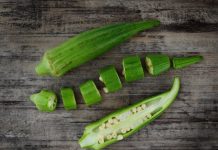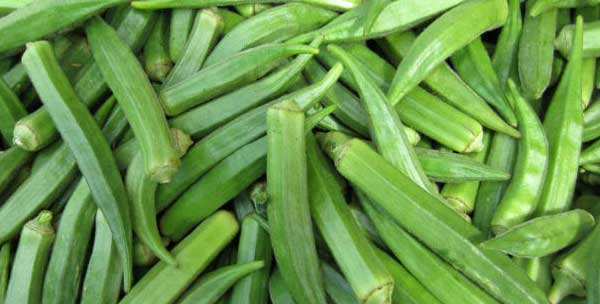- Light: Full sun
- Pod size: 3 inches
- Matures: 50 to 64 days
- Plant spacing: 10 inches apart
Heirloom. High yields of spineless, tender ribbed pods with excellent flavor. Traditional favorite for soups and stews. Can be canned, fried, roasted or boiled. Harvest pods when 3 inches long. Pods get much bigger, but small pods are more tender. Plants just keep growing until cool weather in the fall, so they will get 6 feet or taller in areas with a long, warm growing season.
Light requirements: Full sun for best yields.
Planting: Space 10 inches apart.
Soil requirements: Okra needs well-drained, nutrient-rich soil. Amend soil with 3 to 5 inches of compost or other organic matter prior to planting. Soil pH should be 6.5 to 7.0.
Water requirements: Keep soil consistently moist as plants establish. Established plants benefit from 1 inch of water per week, but withstand mild drought. Mulch soil to reduce water evaporation, but wait until soil has warmed before covering it.
Frost-fighting plan: Okra is damaged by light frost (28º F to 32º F). In northernmost regions, if a surprise late spring frost comes into the forecast, protect seedlings with a frost blanket.
Common issues: Curved or bent pods are caused by sucking insects feeding on developing pods. Pods are still edible. Pests to watch out for included flea beetles, Japanese beetles, stink bugs, aphids, corn earworms, fire ants, and root knot nematodes. When cool conditions prevail, okra can develop verticillium or fusarium wilt.
Harvesting: Pick pods when they’re 2 to 4 inches long. They grow fast, so harvest frequently. Use a knife or scissors to snip pod stems, leaving a bit of stem attached to each pod. Pods ripen first at the bottom of plants. Wear gloves and long sleeves until you know if you react to the spines on plants. Pods that are tough to cut are too tough to eat.
Storage: Refrigerate okra pods with stems attached in a paper bag or wrap in a dry paper towel and tuck into a loosely closed or perforated plastic bag. Use within 2 to 3 days.
Nutritional Information
The tender young pods of this indispensable Southern vegetable are eagerly awaited in the summer to be cooked into gumbos, stewed with tomatoes, and above all crisply fried in a cornmeal coating. The fiber found in okra is thought by nutritionists to be a superior type that helps stabilize blood sugar. This fiber is also thought to be one of the best contributors to intestinal health. The mucilage that makes okra gummy, some say slimy, when cooked is said to bind cholesterol and bile acid carrying toxins out of the body. Just remember that fried okra will add a lot of extra calories to the following nutritional profile, which is for simply boiled okra.
Nutrition Facts
- Calories: 18
- Carbohydrates: 4g
- Dietary fiber: 2g
- Sugars: 2g
- Protein: 1g
- Vitamin A: 5% DV
- Vitamin C: 22%
- Vitamin K: 40%
- Folate: 9%
- Vitamin B6: 7%
- Manganese: 12%
- Magnesium: 7%
- Calcium: 6%





